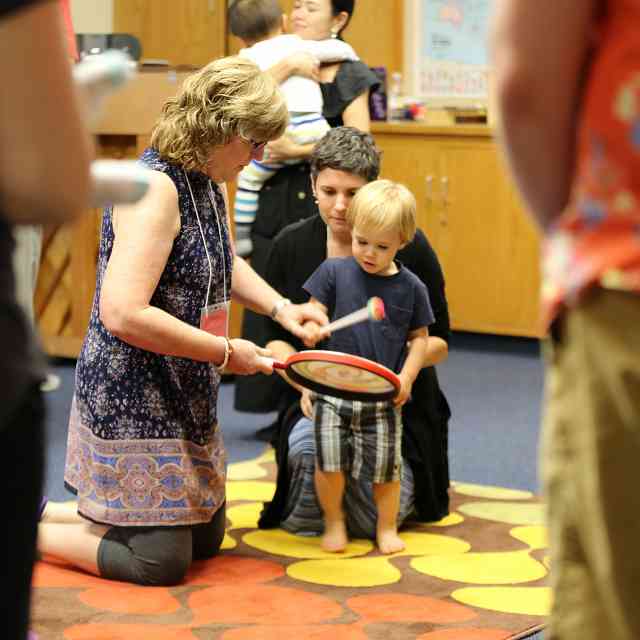When the public schools across Indiana and Indiana University made the decision to close because of the COVID-19 virus, it quickly became clear that it would not be possible to teach in-person lessons to my students at the Indianapolis Suzuki Academy. At first, I felt worried: how could my students possibly learn remotely when a large part of my teaching style consists of hands-on adjustments and a focus on posture and tone production? How could I possibly maintain a five-year-old’s interest when speaking to him through a computer screen? Even as a millennial and near-digital native, I am constantly wary of our technological society: I recognize technology’s potential to masquerade as a tool when truly taking the form of a distraction.
When I reached out to my families to let them know that our lesson format would change to a combination of Zoom meetings and video file sharing by way of the Box platform (similar to Google Drive), I worried that I would receive a negative response, in part because of my strong feelings of trepidation. I was quickly reminded, through the positive response from parents of my students, that we as adults are responsible for creating positive learning environments, regardless of whether these environments are face-to-face in the classroom or in the virtual space. One parent responded to my email with the words, “I feel like virtual lessons will work! The kids will love it!” And it turns out, they do. And learning is happening. Through this experience, I have seen how cooperation and positive attitudes between the parent and teacher in the Suzuki triangle have the power to make the most of a virtual learning environment. Just this past Monday, an entire family participated in their Zoom lesson: the father called in while commuting home while the mother and two children participated in the lessons from the kitchen table. Only a few days in isolation, and we were all so happy to see each other, even through a computer screen!
I have structured my lessons in a non-traditional way, to fit with the unique demands and constraints of online teaching and learning. I use the platform Zoom for synchronous (real-time) lessons, which can be loosely equated with FaceTime or Skype, but with additional features. The features that I have used that are unique to Zoom include recording the lesson or a portion of the lesson to make available to students later, and screen sharing to guide them through the written aspects of their assignments. I also engage with my students in asynchronous lessons, where students upload video assignments to a shared folder on Box, a program similar to Google Drive. From Box, I can provide written comments on video submissions, upload video responses if the student requires an auditory or visual demonstration and maintain a word document that takes the place of our weekly “practice chart.”
Zoom and similar programs such as FaceTime are limited in teaching lessons because sound quality is compressed and difficult to discern, I cannot easily move around the student for different vantage points to evaluate posture, and I cannot play along with students to demonstrate intonation and phrasing. The additional video uploads of assignments onto Box prove useful because the sound quality is superior in the recordings and because students are held accountable for producing work throughout the week. Most of my students do not want to submit mediocre videos, so they work hard to produce their best work before they upload videos to their folders. By recording themselves and evaluating what they produce, my students are developing valuable listening and problem-solving skills.
My Online Learning Set Up
Each student receives one synchronous lesson each week on Zoom.
Each student has a folder on Box that contains the following:
- Assignments
- A word document with all assignments for the week, including video upload deadlines.
- I leave comments on this document when video upload assignments have been completed, or when I add new assignments based on student progress.
- Video Assignment Folder
- I comment directly on student submissions and let them know if I am uploading a response video, or simply give them verbal feedback on their submission if that is sufficient.
- Videos from the Teacher Folder
- Includes a “Practice Video” folder that contains assignments (for example, a video demonstration for the “A section” of Humoresque for a student just beginning that piece).
- Includes a “Video Responses” folder that contains 1 – 3 minutes of feedback—essentially a mini lesson—to videos that students have submitted.
As I have gained experience in this new format, a few tips that I would give to families embarking on virtual lessons include:
- If possible, use a computer or laptop during your synchronous lesson. Even though it is possible to use a smartphone, the screen is very small, and it is helpful for students to view their teacher as large as possible.
- During synchronous lessons, ensure that the learning environment at home is free from any auditory or visual distractions.
- If available, interact with your teacher as much as possible in the asynchronous platform. The more content you upload for your teacher to evaluate, the more feedback you will get from your teacher.
- Parents and teachers with a positive attitude foster the same attitude in students and reap greater results!
At the beginning of the week, I was filled with anxiety about how my students would succeed in the coming weeks without in-person lessons. Now, I feel that some of the online teaching techniques that I am developing might endure after in-person lessons resume! I am thankful for the opportunity to innovate alongside flexible and inquisitive students and parents. The parent–teacher–student triangle has never been so strong in my studio.







